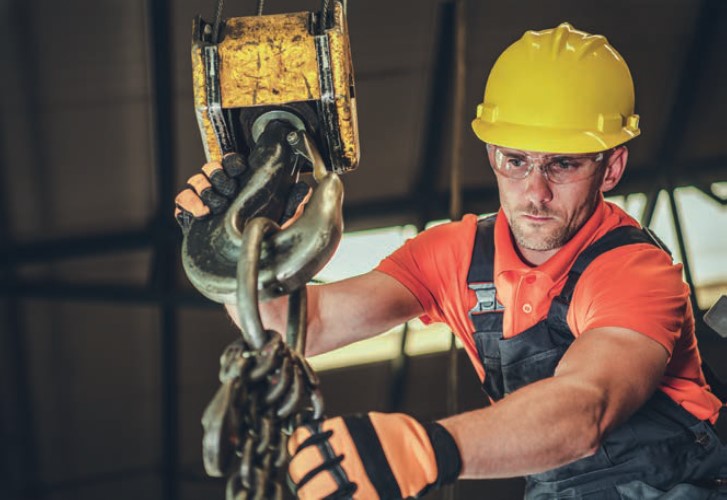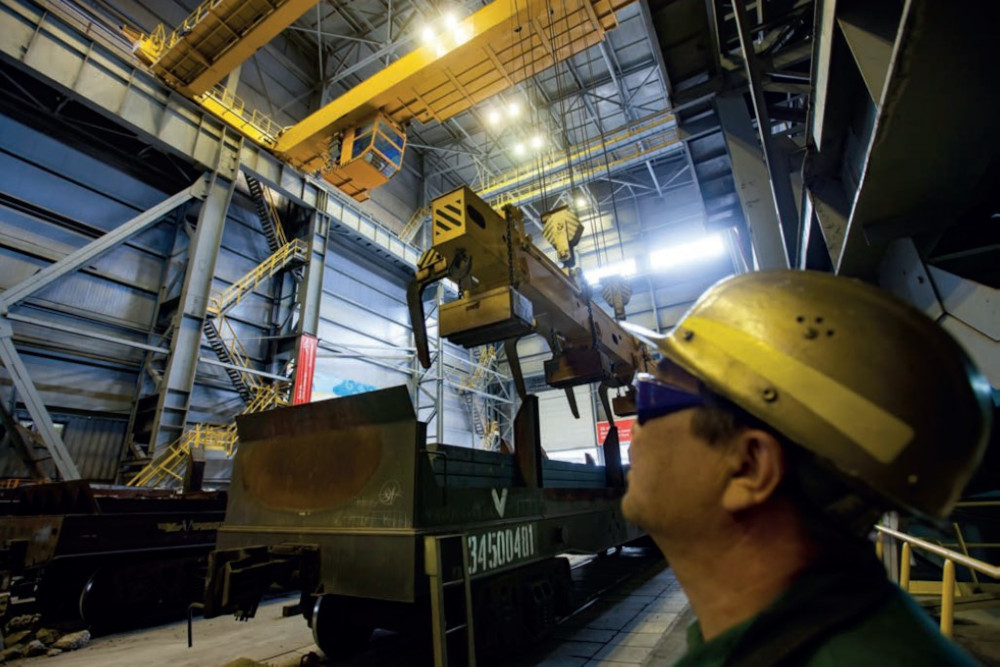Elevating safety standards
19 April 2024Nick Warrick, sales manager at All Seasons Uniforms, discusses the critical role played by protective gear in overhead crane operations.
Overhead crane operations are a linchpin in industrial settings, serving as the backbone of efficient material handling. However, amidst their utility lies a sobering reality: the inherent risks they pose to personnel.
Recent findings from the Konecranes Training Institute underscore this reality, revealing that 249 industrial overhead crane incidents have occurred over the last decade. These incidents have resulted in 133 fatalities, with 37% of these victims crushed by loads. This data highlights the inherent risks associated with overhead crane operations and underscores the urgent need for enhanced safety protocols.
Protective gear or personal protective equipment (PPE) emerges as a pivotal element in this equation, offering a shield against the daily hazards workers face, ensuring the safety of overhead crane operators and surrounding personnel. This equipment is designed to mitigate risks and provide a defence against common hazards encountered in crane operations. Here are the essential types of protective gear tailored for these operators: Hard hats, safety glasses or goggles, hearing protection, high-visibility clothing, steel-toed boots, gloves, fall protection gear.
Here are key guidelines for optimising the selection and use of protective gear in crane operations:
- Conduct a hazard assessment: Before selecting PPE, conduct a thorough hazard assessment of the crane operation area. Identify potential risks such as falling objects, electrical hazards, noise, and exposure to harmful substances. This assessment will guide the choice of appropriate protective gear tailored to specific hazards.
- Choose the right PPE for the job: Ensure that the gear meets or exceeds safety standards set by regulatory bodies. For instance, helmets should have the appropriate impact rating, and safety glasses should offer adequate protection against UV rays or chemical splashes.
- Ensure proper fit and comfort: PPE must fit properly to offer maximum protection. Ill-fitting gear can compromise safety and hinder the operator’s ability to perform tasks efficiently. You should also consider the comfort and ergonomics of the protective gear, as operators will wear it for extended periods.
- Provide training on PPE usage: It is crucial to train crane operators and other personnel on the correct use, maintenance, and limitations of their protective gear. This training should cover how to wear the equipment properly, when to use it, and how to recognize when it needs replacement.
- Regularly inspect and maintain PPE: Regular inspection and maintenance of PPE are essential to ensure its effectiveness. Set up a schedule for checking the condition of protective gear and replace any item that shows signs of wear and tear or damage. Keeping PPE in optimal condition extends its lifespan and ensures reliable protection.
STANDARDS AND REGULATIONS
Safety gear used in crane operations must comply with national standards like OSHA (Occupational Safety and Health Administration) in the United States or the equivalent in other countries. These standards outline specific requirements for manufacturing, testing, and using protective equipment to ensure it provides adequate protection against the hazards present in crane operations. Some of the notable standards include:
- Hard hats: Must meet American National Standards Institute (ANSI) Z89.1 standards in the US for impact and penetration resistance.
- Eye and face protection: Should comply with ANSI Z87.1 for impact, non-ionizing radiation, and chemical exposure protection.
- Hearing protection: Earplugs and earmuffs must be rated according to NRR (Noise Reduction Rating) standards, ensuring they offer sufficient protection against occupational noise.
- Hand protection: Gloves should be selected based on identified hazards, such as cuts, abrasions, chemicals, or electrical risks, and comply with relevant ASTM (American Society for Testing and Materials) standards.
- Footwear: Safety boots must adhere to ASTM F2413 standards in the US for impact, compression, and puncture resistance.
- High-visibility clothing: Must meet ANSI/ISEA (International Safety Equipment Association) 107 standards for visibility and reflectivity, enhancing the wearer’s visibility to operators and drivers.
Employers are responsible for ensuring that all protective gear meets the applicable safety standards and regulations. This involves selecting certified equipment, maintaining compliance records, and regularly reviewing safety protocols to align with the latest guidelines.
INNOVATIONS AND TRENDS
The future of workwear in industries like crane operations is rapidly evolving with a focus on enhancing safety and efficiency. Innovations such as smart tech are being integrated into garments, enabling real-time monitoring of vital signs and hazardous conditions, thereby preventing accidents.
Advanced materials are revolutionising protective gear, offering lightweight yet durable fabrics that improve protection and comfort. There is more prioritisation of ergonomic design in workwear, focusing on the human body’s natural movement. The design enhances mobility and reduces the risk of injuries, making safety wear more comfortable and functional.
The trend towards sustainability is also shaping the future of workwear, with eco-friendly materials and manufacturing processes reducing environmental impact. These advancements promise a new era of workwear that is smarter, safer, and more sustainable, aligning with the needs of modern workplaces for optimal worker safety and efficiency.
Elevating safety standards in overhead crane operations through the proper use of PPE and adherence to safety protocols is imperative. The gear and safety standards collectively enhance operational efficiency, mitigate risks, and ensure legal compliance.
The innovations and future trends in workwear are set to further enhance the safety and efficiency of these overhead crane operations. As we navigate these advancements, industry professionals must stay informed and proactive in integrating these practices into their safety protocols. By prioritising safety, they can create a more secure, efficient, and sustainable working environment for all involved.


